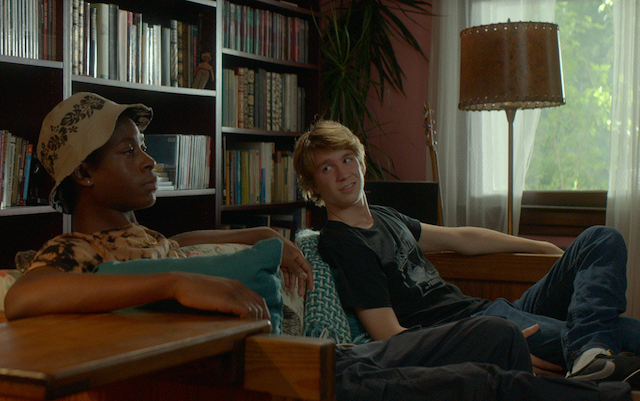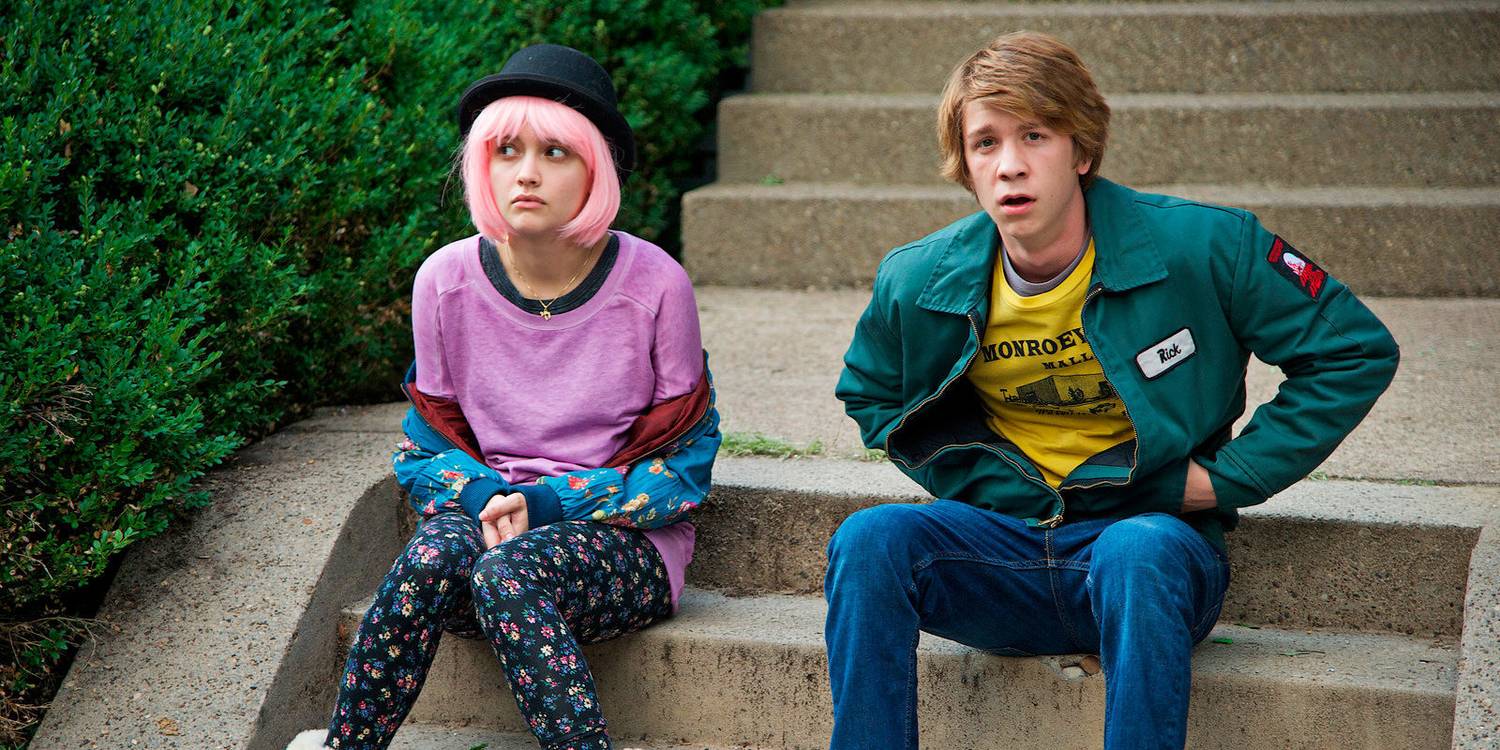A road movie and a variation on the buddy movie, which often go hand in hand, James Ponsoldt's The End of the Tour instead most resembles Louis Malle's 1981 My Dinner with Andre in which the actors Andre Gregory and Wallace Shawn, playing Andre and Wally, talk. The dinner is prompted at the urging of a mutual friend Andre comes across in the street sobbing -- so profoundly has he been moved by Charlotte Andergast's (Ingrid Bergman) line in Ingmar Bergman's 1978 Autumn Sonata: "I could always live in my art, but never in my life."
This question or dilemma or predicament of existing within narrative order to keep the random chaos of lived experience at bay informs Autumn Sonata, My Dinner with Andre, and The End of the Tour. Another quandary hovers around, beside, and within the first, which is to what extent the artist (not unlike the rest of us -- an important consideration) seeks the substance of creative work (and the man-child seeks the substance of slacking) as one method (there are many) to avoid the tedium of adult responsibility.
 |
| Ingrid Bergman and Liv Ullmann in Ingmar Bergman's 1978 Autumn Sonata |
In My Dinner with Andre, the old childhood friends reluctantly agree to meet, and over dinner the conversation ranges from a discussion of the nature of theater, which is to say a discussion of the nature of art, which is to say a discussion of the nature of life. Andre, a director of experimental theater who often leaves his family to embark on soul-searching sojourns to exotic lands, has just returned to the city after a five year hiatus.
Wally, a stage actor and bon vivant, argues that Andre's is a rarefied life, impossible for most people who, all other considerations aside, at the very least would not even be able to remotely afford such peripatetic luxuries. Wally makes the case for quotidian joys and little pleasures. Andre argues that what passes for life in New York City is an artificial construct of desires and sums up his position saying, "I don't know about you, Wally, but I just had to put myself into a kind of training program to learn how to be a human being."
Wally, a stage actor and bon vivant, argues that Andre's is a rarefied life, impossible for most people who, all other considerations aside, at the very least would not even be able to remotely afford such peripatetic luxuries. Wally makes the case for quotidian joys and little pleasures. Andre argues that what passes for life in New York City is an artificial construct of desires and sums up his position saying, "I don't know about you, Wally, but I just had to put myself into a kind of training program to learn how to be a human being."
 |
| Wallace Shawn and Andre Gregory in Louis Malle's 1981 My Dinner with Andre |
The End of the Tour gives us David Lipsky, a self-absorbed writer for Rolling Stone who, we'll come to learn, has bi-coastal romantic involvements, and David Foster Wallace, the depression-haunted and reclusive but newly lionized novelist who has reluctantly agreed to Lipsky's interview.
Lipsky heads out to Normal, Illinois, and after an uncomfortable introduction -- and the intrusion of a pocket recorder that itself becomes a character -- immediately begins to tape. The two writers settle into a sometimes relaxed, sometimes awkward rhythm of smoking, soft drinks, junk food, and conversation that ranges from a discussion of the meaning of Wallace's new novel Infinite Jest; to a discussion of the nature of popular culture; to a discussion of the meaning of life, the nature of despair and the conditions necessary for hope.
Lipsky heads out to Normal, Illinois, and after an uncomfortable introduction -- and the intrusion of a pocket recorder that itself becomes a character -- immediately begins to tape. The two writers settle into a sometimes relaxed, sometimes awkward rhythm of smoking, soft drinks, junk food, and conversation that ranges from a discussion of the meaning of Wallace's new novel Infinite Jest; to a discussion of the nature of popular culture; to a discussion of the meaning of life, the nature of despair and the conditions necessary for hope.
 |
| Jesse Eisenberg as David Lipsky in The End of the Tour |
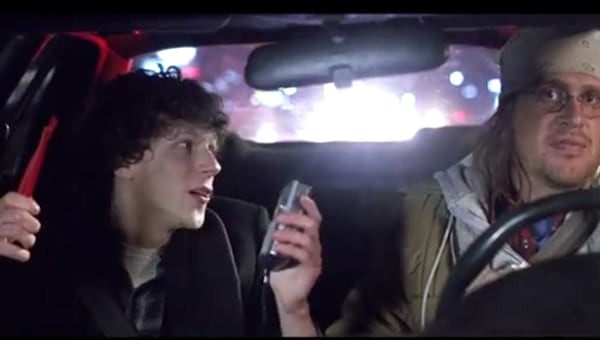 |
| Jesse Eisenberg as David Lipsky and Jason Segel as David Foster Wallace in The End of the Tour |
After hitting what twelve-step programs call rock bottom, Wallace put himself into a kind of training program to learn how to be a human being. Lipsky has just been trying to get ahead and doesn't mind using other people to his own ends -- which is to bask in the fame he envies Wallace for.
Wallace knows the addictive nature of contemporary life first hand. In the past he has alternately used alcohol and running to assuage crippling depression. He has at one point committed himself, fearing he would botch a suicide.
One of Lipsky's first observations is that there is no television in Wallace's house, and before long we realize there is good reason for that. Wallace's real Achilles' heel is junk television, and its ubiquity on the road sucks him in like Lorelei.
Wallace knows the addictive nature of contemporary life first hand. In the past he has alternately used alcohol and running to assuage crippling depression. He has at one point committed himself, fearing he would botch a suicide.
One of Lipsky's first observations is that there is no television in Wallace's house, and before long we realize there is good reason for that. Wallace's real Achilles' heel is junk television, and its ubiquity on the road sucks him in like Lorelei.
 |
| Jesse Eisenberg as David Lipsky, Jason Segel as David Foster Wallace and Joan Cusak as their Minneapolis escort in The End of the Tour |
In my opinion, Jesse Eisenberg lacks range, but he has developed a weaselly persona that has been put to good use, not least in The End of the Tour where Lipsky's exploitative nature, journalistic and otherwise, inhibits his relationships.
I first saw Eisenberg as one of William Hundert's (Kevin Kline) pupils in Michael Hoffman's The Emperor's Club (2002), but he really emerged in 2005 in Noah Baumbach's The Squid and the Whale as the elder of two sons forced to take sides in their parents' self-involved breakup. I did not see any of his intervening films until he appeared in David Fincer's The Social Network (2010) playing the contemptuous billionaire Mark Zuckerberg; then a cavalier Woody-Allen-character in To Rome with Love (2012), an arrogant street magician in Louis Leterrier's Now You See Me (2013), a scornful domestic terrorist in Kelly Reichardt's Night Moves (2013), and the self-righteously inferior office drone James/bumptious Simon in Richard Ayoade's The Double (2013).
I first saw Eisenberg as one of William Hundert's (Kevin Kline) pupils in Michael Hoffman's The Emperor's Club (2002), but he really emerged in 2005 in Noah Baumbach's The Squid and the Whale as the elder of two sons forced to take sides in their parents' self-involved breakup. I did not see any of his intervening films until he appeared in David Fincer's The Social Network (2010) playing the contemptuous billionaire Mark Zuckerberg; then a cavalier Woody-Allen-character in To Rome with Love (2012), an arrogant street magician in Louis Leterrier's Now You See Me (2013), a scornful domestic terrorist in Kelly Reichardt's Night Moves (2013), and the self-righteously inferior office drone James/bumptious Simon in Richard Ayoade's The Double (2013).
Then there's Jason Segel who has made a career out of the eternal man-child persona, yet demonstrates in The End of the Tour that he has range galore. His name is inextricably linked with Judd Apatow's, though only five of Segel's 25 films to date (a surprising number I come to find out he wrote) were made with Apatow.
The only Segel film I've liked (of the very few I've seen) was the Duplass brothers' Jeff, Who Lives at Home about an adult stoner who still lives with his mother (Susan Saradon) and who, in his quest to find meaning, has latched on to the movie Signs, and thus believes that every single thing he witnesses is indeed an omen he must pursue to realize his destiny.
The only Segel film I've liked (of the very few I've seen) was the Duplass brothers' Jeff, Who Lives at Home about an adult stoner who still lives with his mother (Susan Saradon) and who, in his quest to find meaning, has latched on to the movie Signs, and thus believes that every single thing he witnesses is indeed an omen he must pursue to realize his destiny.
Ponsoldt's master stroke with The End of the Tour has been to cast both actors to type. "Some David Foster Wallace fans recoiled when they heard that sitcom veteran Jason Segel had been cast to play the Infinite Jest author in a movie," Mark Jenkins noted in his NPR review.
My reaction on first viewing was that The End of the Tour is quintessentially American but uniquely so, though I left that "uniquely" vague. That is wrong. It is not unique at all.
Indeed, the argument the film makes is that Infinite Jest is a quintessentially American novel; that David Foster Wallace was a quintessentially American novelist; and that the man-child is the quintessential American character. If our protagonists are not the kids Huckleberry Finn or Holden Caulfield themselves, they are grown men behaving like boys: Jay Gatsby, Augie March, Rabbit Angstrom. American literature is one big song of myself.
The Davids of The End of the Tour are traveling the road of the American mythos like Sal Paradise and Dean Moriarty. In the film, the Minneapolis NPR affiliate's interviewer begins by disdainfully describing the physical size of Infinite Jest: "1,079 pages and weighing in at three pounds, three ounces." Philip Roth took more time to do it, but his affair with Nathan Zuckerman ran to 2,200 pages.
My reaction on first viewing was that The End of the Tour is quintessentially American but uniquely so, though I left that "uniquely" vague. That is wrong. It is not unique at all.
Indeed, the argument the film makes is that Infinite Jest is a quintessentially American novel; that David Foster Wallace was a quintessentially American novelist; and that the man-child is the quintessential American character. If our protagonists are not the kids Huckleberry Finn or Holden Caulfield themselves, they are grown men behaving like boys: Jay Gatsby, Augie March, Rabbit Angstrom. American literature is one big song of myself.
The Davids of The End of the Tour are traveling the road of the American mythos like Sal Paradise and Dean Moriarty. In the film, the Minneapolis NPR affiliate's interviewer begins by disdainfully describing the physical size of Infinite Jest: "1,079 pages and weighing in at three pounds, three ounces." Philip Roth took more time to do it, but his affair with Nathan Zuckerman ran to 2,200 pages.
 |
| Jesse Eisenberg as David Lipsky and Jason Segel in The End of the Tour |
Though we hear Lipsky read from his novel, The Art Fair, and from Although of Course You End Up Becoming Yourself: A Road Trip with David Foster Wallace, the book that came out of the days he spent with the writer, we never hear anything from Infinite Jest. The camera cuts away from the bookstore reading just as Wallace walks toward the microphone, as if to divorce the novelist from the man.
Wallace talks and talks and talks about the very motifs the novel explores -- our abandonment of genuine community for the artificial connectedness of screens, our detachment from the natural world, our active disinterest in existential meaning, our addiction to porn -- not necessarily actual pornography, though that's part of it, too, but the pornographic pleasure we derive from the mastication, in the words of the film, of junk food and junk TV and junk consumerism and junk politics and junk thinking that sustain us neither nutritionally nor spiritually.
Keep in mind that Infinite Jest was published in 1996, almost 20 years ago; our disengagement has only intensified since. It's not the glamorous decadence of heroine addiction ala Lou Reed lyrics. It's just banal addiction that makes American consumerist culture thrive, which the film juxtaposes with the valiant attempt Wallace makes to resist the siren song.
Even if it is all talk, this is a raw, moving narrative about an enormously creative individual trying to come to terms with the truth of his own addictions and the truth of some overarching meaning.
Wallace talks and talks and talks about the very motifs the novel explores -- our abandonment of genuine community for the artificial connectedness of screens, our detachment from the natural world, our active disinterest in existential meaning, our addiction to porn -- not necessarily actual pornography, though that's part of it, too, but the pornographic pleasure we derive from the mastication, in the words of the film, of junk food and junk TV and junk consumerism and junk politics and junk thinking that sustain us neither nutritionally nor spiritually.
Keep in mind that Infinite Jest was published in 1996, almost 20 years ago; our disengagement has only intensified since. It's not the glamorous decadence of heroine addiction ala Lou Reed lyrics. It's just banal addiction that makes American consumerist culture thrive, which the film juxtaposes with the valiant attempt Wallace makes to resist the siren song.
Even if it is all talk, this is a raw, moving narrative about an enormously creative individual trying to come to terms with the truth of his own addictions and the truth of some overarching meaning.
 |
| Jesse Eisenberg as David Lipsky and Jason Segel as David Foster Wallace in The End of the Tour |
For all his idiosyncrasies and introversion, Wallace is possessed of a deep empathy that the opportunistic Lipsky lacks. At one point Wallace proudly insists that what is most important to him is his regular guy-ness. If the unexamined life is not worth living, then the irony -- and it hangs like a pall over The End of the Tour -- is that this deeply examined life ends a suicide.
On the morning of Lipsky's departure, Wallace goes outside to scrape snow from his car. Lipsky uses the opportunity as one last chance to pry, quickly speaking a list into his tape recorder of the random set dressing of Wallace's life: doggie chew toys, posters, refrigerator postcards, books, soda cans, tchotches, a fluffy toilet seat cover, and then, for the first time, Lipsky notices a plaque in the bathroom:
O my God, teach me to be generous,
teach me to serve you as I should,
to give without counting the cost,
to fight without fear of being wounded
to work without seeking rest, to labor without expecting any reward
but the knowledge that I am doing your most holy will.
~~ St. Ignatius of Loyola
to give without counting the cost,
to fight without fear of being wounded
to work without seeking rest, to labor without expecting any reward
but the knowledge that I am doing your most holy will.
~~ St. Ignatius of Loyola
 |
| Jason Segel as David Foster Wallace and Jesse Eisenberg as David Lipsky in The End of the Tour |
If there is one element of Wallace that Segel's characterization brings most to the fore, it is Wallace's humility, and it is this humility that Ponsoldt plays against Lipsky's self-interest.
In his now famous 2005 Commencement Address at Kenyon College (I am an admirer of Wallace as an essayist and probably never will read Infinite Jest), Wallace opens with a story about two young fish to whom an old fish passing by calls out: "Morning, boys. How's the water?" "[O]ne of them looks over at the other and goes, 'What the hell is water?'"
The point, Wallace explains, "is that the most obvious, ubiquitous, important realities are often the ones that are the hardest to see and talk about." The point is to cultivate critical awareness about ourselves and about our certainties, which are usually false.
In his now famous 2005 Commencement Address at Kenyon College (I am an admirer of Wallace as an essayist and probably never will read Infinite Jest), Wallace opens with a story about two young fish to whom an old fish passing by calls out: "Morning, boys. How's the water?" "[O]ne of them looks over at the other and goes, 'What the hell is water?'"
The point, Wallace explains, "is that the most obvious, ubiquitous, important realities are often the ones that are the hardest to see and talk about." The point is to cultivate critical awareness about ourselves and about our certainties, which are usually false.
"This is not a matter of virtue," Wallace insists, "It's a matter of my choosing to do the work of somehow altering or getting free of my natural, hard-wired default-setting, which is to be deeply and literally self-centered, and to see and interpret everything through this lens of self. [....] "[L]earning how to think really means learning how to exercise some control over how and what you think. It means being conscious and aware enough to choose what you pay attention to and to choose how you construct meaning from experience. Because if you cannot exercise this kind of choice in adult life, you will be totally hosed."
 |
| Jason Segel as David Foster Wallace in The End of the Tour |
David Foster Wallace made a conscious effort to grow out of the egoistic man-child default-setting where Lipsky is stuck.
If you can do that, Wallace so generously advises the Kenyon graduates, "It will actually be within your power to experience a crowded, loud, slow, consumer-hell-type [adult] situation as not only meaningful but sacred, on fire with the same force that lit the stars -- compassion, love, the sub-surface unity of all things. Not that that mystical stuff's necessarily true: The only thing that's capital-T True is that you get to decide how you're going to try to see it. You get to consciously decide what has meaning and what doesn't. You get to decide what to worship."
If you can do that, Wallace so generously advises the Kenyon graduates, "It will actually be within your power to experience a crowded, loud, slow, consumer-hell-type [adult] situation as not only meaningful but sacred, on fire with the same force that lit the stars -- compassion, love, the sub-surface unity of all things. Not that that mystical stuff's necessarily true: The only thing that's capital-T True is that you get to decide how you're going to try to see it. You get to consciously decide what has meaning and what doesn't. You get to decide what to worship."
"None of this is about morality, or religion, or dogma, or big fancy questions of life after death. The capital-T Truth is about life before death. .... It is about simple awareness -- awareness of what is so real and essential, so hidden in plain sight all around us, that we have to keep reminding ourselves, over and over: "This is water, this is water.'"
Links to Additional Resources
The End of the Tour. Critics Round Up.
Andrew O'Hehir. "Jason Segel on Playing David Foster Wallace." Salon, July 29, 2015.
A.O. Scott. "The Death of Adulthood in American Culture." New York Times, September 11, 2014.
Amy Taubin. My Dinner with Andre: Long, Strange Trips. The Criterion Collection. June 8, 2015.A Qui



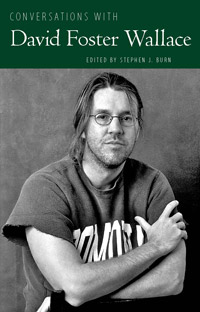
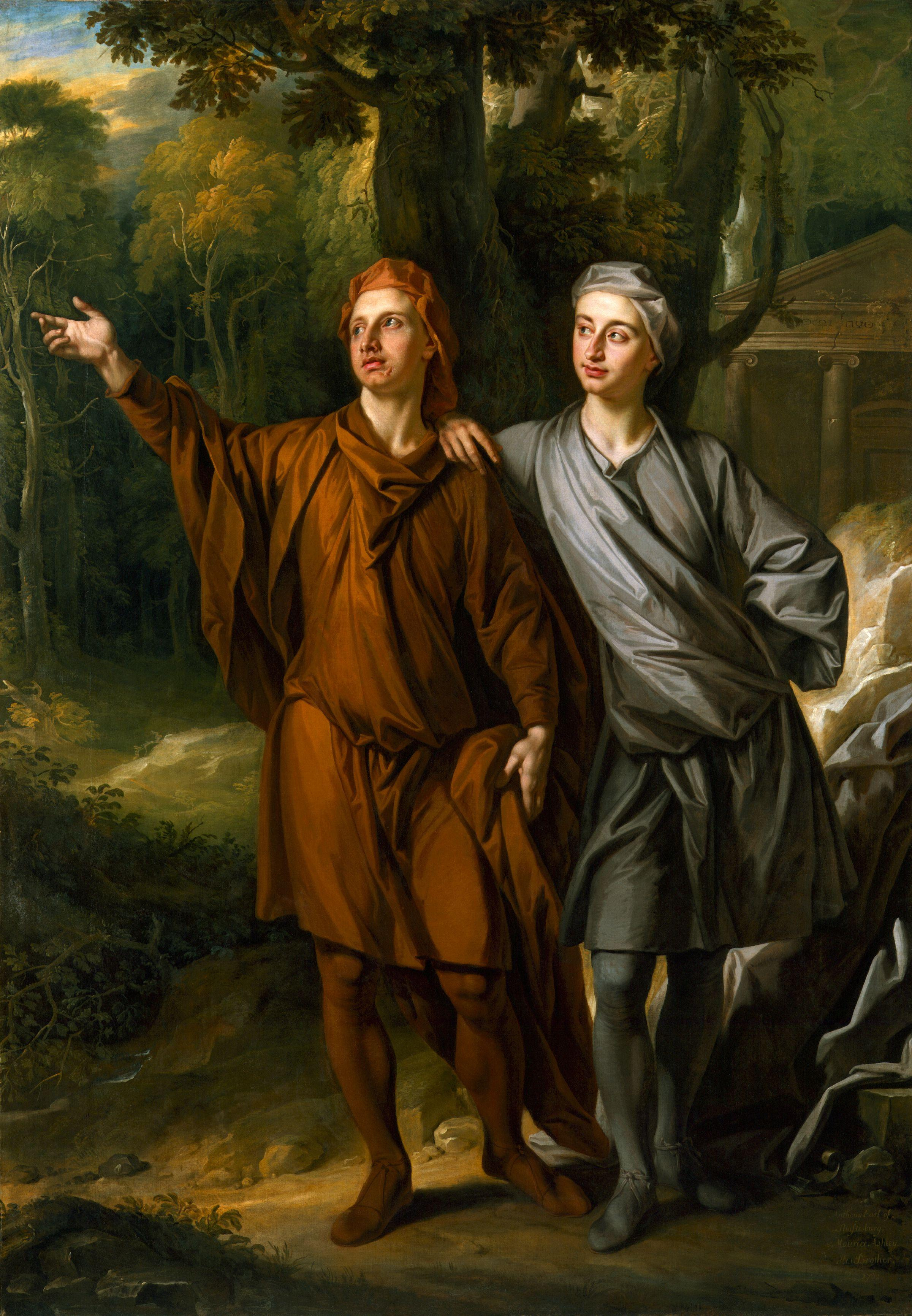


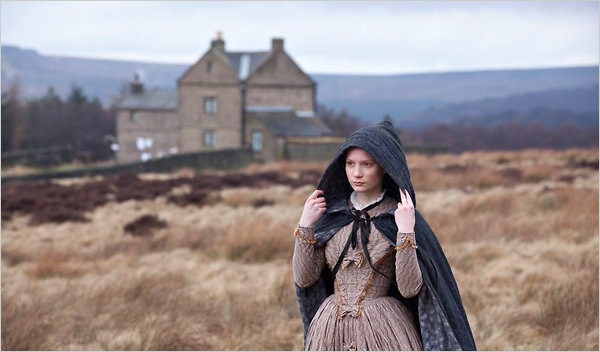

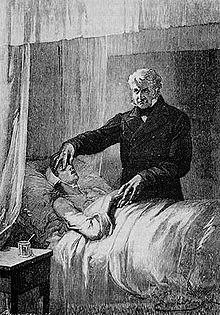

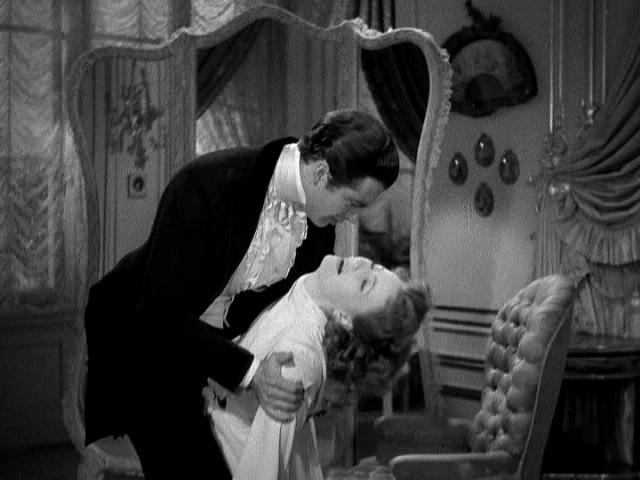

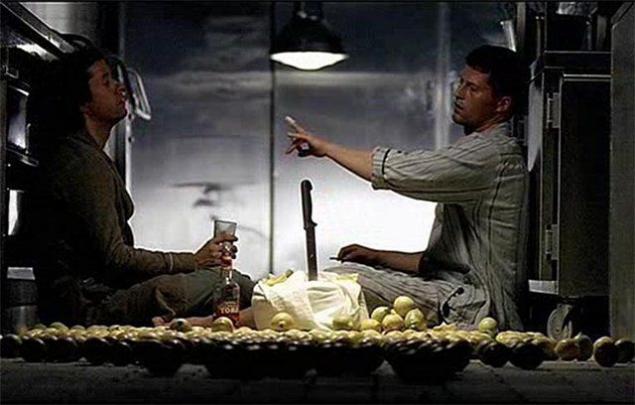
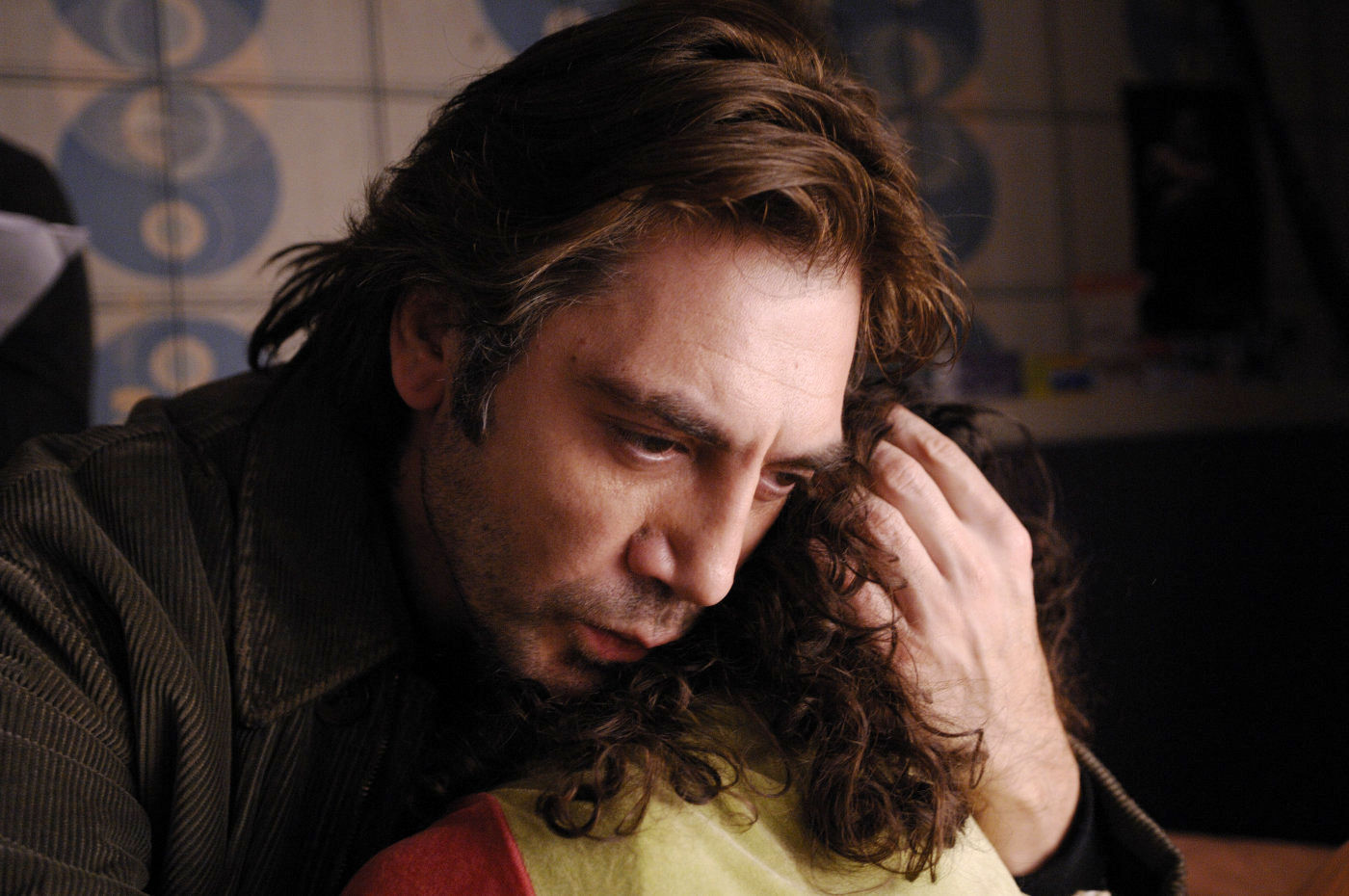


_POSTER.jpg)



